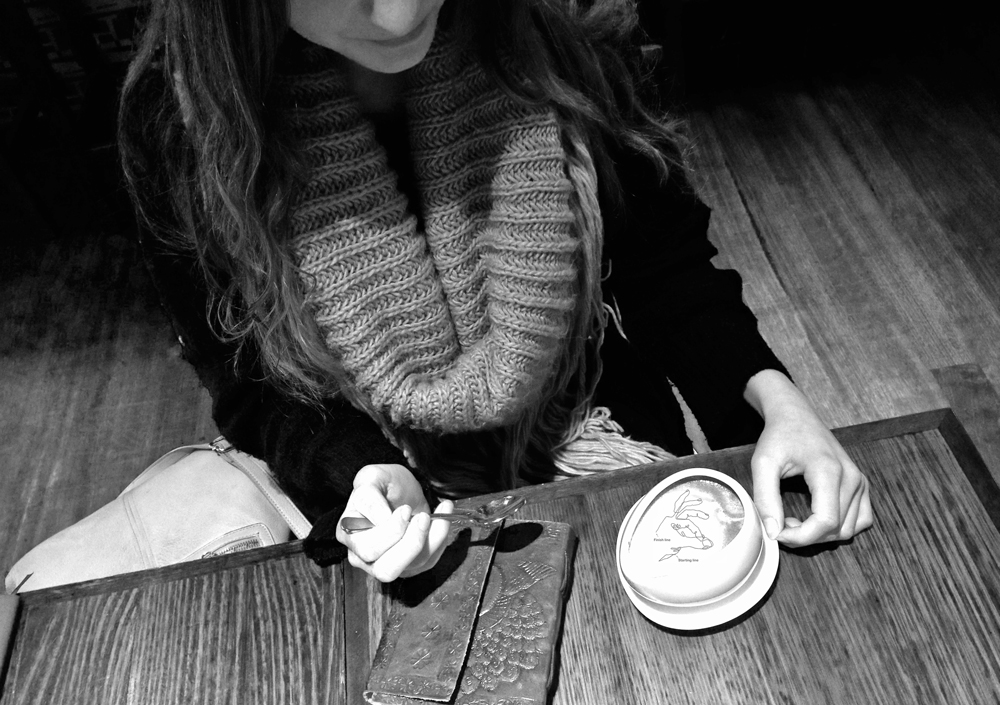SYDNEY WRITERS’ FESTIVAL
“The Art of Reading”, the session (and the book)
Damon Young, the philosopher (and author)
…
The room was a slow murmur, echoing of warm terracotta. The colour was a sound, the sound a colour. The seats blended with my autumn-appropriate scarf; my cheeks were aglow after a stroll in the sun.

In his session, Young questions why reading is not celebrated as a creative act. There is an emphasis on writer’s improving their craft, but no affordance given to reading.
Can readers “grow” too? What about developing our skills and craft as readers?
Books shape you. Reading shapes you. Though a book can’t make you anything. The experience of a book is relative to the reader. Young thinks of reading as an invitation, with readers given a freedom of choice as to whether they will accept or reject the work.
Readers are responsible for translating words into a world, sensation into sense.
Young emphasises the role of the reader in continuing what the author starts. We must not blame an author for their writing. Instead, we must ask ourselves, why do we fail to engage with the writing. If we are unwilling to move, or to be moved, we reduce our reading experience.
There are many reasons why we may not engage with a text, and we can often put that onto the writer – their voice, style, plot, structure, characters, etc. – though it tends to say more about us than them when we cannot connect. Hence, Young wants to know: Are there ‘steps’ or ‘rules’ to being a good reader?
We need to learn to read more virtuously.
Young is concerned with the “virtue” of reading, in reference to the Greek definition of excellence. If we understand Aristotle’s view of virtue as an excellent disposition, a rational bent, then there is virtue attributed to the right thing and the right time. Are there certain “virtues” to the art of reading? Can we cultivate dispositions of when to read, when to slow, when to critique, when to stop? Do we need to navigate the dispositions of learning to dance, to adapt, to respond with dynamic decisions as a reader, to ensure we enter into the right thing and the right time?
The Six Virtues of Reading:
- Curiosity
- Patience
- Pride
- Courage
- Justice
- Temperance
Young acknowledges that these virtues must be rationally oriented to some purpose or ending. He agrees with Aristotle’s understanding of a virtue as a means between two vices.
Take the virtue of courage for instance. You can be too bold, going into a book that will hit you smack-bang on the teeth. Or. You can avoid a book, cowardly not allowing yourself to be challenged.
There is no ‘duty’ to read. There is a degree of choice, a disposition to read.

In the session, Young focused on patience, a virtue that has barely been theoretically touched on – bar a few mentions from Christian theologians and the Greeks. Plato mentions perseverance, though Young attributes Augustine to the fullest account in his discussion of spiritual forbearance.
Young talks of patience and perseverance as a search for redemption, as readers – through forbearance – attune to an existence beyond the words and world. Reading engages with awareness, awakening the truth of human temporality. If you become aware of your own mortality when you are reading, time seems slow.
As a philosopher, Young delves into time as a construct. There is not one synchronised time. There are instead, times. Rhythms. No single second is cut off from its fellows. It is as though there is a personal automaton inside of us that marks time. Mortality. Reading obscures our sense of time. There is a unique ubiquity. Time is of the essence. As readers we ask ourselves: Is this worth the time? Is it a waste of time?
We sit on a straddle bag of time astride past and future, a play upon the now as a feel for concrete movement emerges from temporality. When reading, we must recall previous paragraphs, anticipate what is coming, and give meaning to these. We feel the interval of time with two ends embedded.
Young also mentions boredom, as reading can be a form of pain. We are conscious of time passing when we are not committed. If we experience boredom, distance, dullness, and discomfort – then we become aware of empty time. Reading becomes a bearing of ill, not a confrontation with horror. We engage with the reality that time is ticking away, rather than engaging in the reality of the text.
There is a point where perception confronts itself. We can be driven crazy as we become too aware, and the confrontation leads to an emphasis on self instead of the development of empathy. Reading can tender, leaving the self more frayed and vulnerable. However, it is only through patience and investment that we open to a book. Reading is tedium in that respect.
Texts have spikes, and if we dare to mount walls as a reader, we will risk puncture.
We can throw ourselves forward and back in human temporality when we are reading, as we bring our memories with us. Thus, we must check our response to a book against the self and against others. Young ultimately provides a window into the world beyond the writer. As readers, we may cultivate dispositions over a lifetime, and this will broaden our horizons.
There is a canvas of consciousness behind the art of reading.
Precursor: this summary is based on hand-written notes. Thus I cannot claim to directly quote Young. Neither can I claim this summary accurately reflects the session, other than to suggest this reveals my own perception of the ideas/thoughts discussed..
Learn more about Sydney Writers’ Festival here.
Learn more about Damon Young here.
